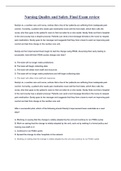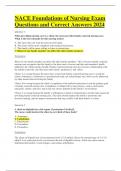Samenvatting
Summary HPIM4001: Economics of Healthcare - Case 2: The economics of innovations
- Instelling
- Maastricht University (UM)
HPIM4001: Economics of Healthcare. Case 2. All lectures and literature is integrated. Lectures are in black, while literature is in red.
[Meer zien]











